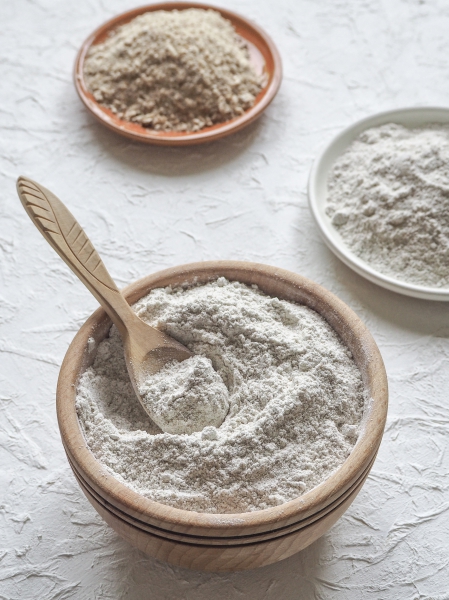Ashwagandha is one of the most important herbs, widely used in ayurveda for centuries for its potent medicinal property and health benefits. Basically, it is a plant, which belongs to nightshade family and extensively grown in India and Africa. The root of this plant has a horsey smell and thus the name ashwagandha is coined where ashwa means horse and gandha means smell and it is said to confer the virility and strength of horse. Various parts of the plant can be used for medical purpose but most commonly the root extract is used for reducing stress. It contains several important biochemical substances which are responsible for decreasing the level of cortisol hormone that is associated with reducing stress and anxiety. The most significant compound of ashwagandha is withanolides and it acts as an effective adaptogen which helps the body to cope up with stress and helps to decrease fatigue, depression and insomnia. It also plays several important roles for preventing various kinds of diseases and promotes immunological responses of the body.
Nutritional composition of Ashwagandha
The root of ashwagandha and its fruits have been used traditionally for medical purposes. Ashwagandha contains various important biochemical and nutritional constituents that make it more health worthy, which include –
- Alkaloids, the most important organic compound of ashwagandha (such as cuseohygrine, anaferine, anahygrine, cuscohygrine and isopelletierine) and steroidal lactones (like withanolide, withaferin A and saponin). It also contains acylsterylglucosides, ergostane, and pseudotropine. These compounds have shown potent anti-stress property as well as have immunomodulatory actions
- It also contains crude fibre, which is associated with enhancing bowel movement and prevents constipation, also improves lipid profile, cardiac health, weight management and blood sugar regulation
- It contains enough moisture within it
- It also contains starch, reducing sugar and non-reducing sugar
- It contains several important trace elements like cupper, iron, zinc and manganese
- It contains too some extent of tannin also

Traditional usage of ashwagandha
- Ashwagandha has been used traditionally in ayurvedic medicine. In ayurveda it is known as ‘Rasayana’ which is referred to as an herb that helps to maintain youth physically and mentally
- The root of ashwagandha has been used in several ways such as it has used as tonic, diuretic, thermogenic and stimulant
- It has provided to children with milk for enhancing their health status
- It has also used as paste by crushing the roots with water and applied to body parts for preventing swelling and inflammation
- The root of ashwagandha along with some other medications have been widely used as snake venom
- Ashwagandha powder has also been used and it has also been consumed in tablet form
- The leaves of this plant have been used to treat fever and swelling
- The fruits of ashwagandha has widely used for medical purpose and especially it helps to promote the health of cornea

Health benefits
Role on nervous system
- It helps to stimulate brain function
- Its antioxidant activity helps to protect the nerve cell from oxidative damages caused by free radicals
- It has been used traditionally for enhancing memory
- It has seen that consumption of ashwagandha is beneficial for those individuals who suffers from Alzheimer’s disease as it helps to slow down the disease progression
Role on mental health
- Cortisol hormone is secreted from adrenaline gland during stress condition and hypoglycemia. Elevated cortisol level is responsible for developing obesity, diabetes, hypertension and other metabolic syndromes. Consumption of the root extract of ashwagandha helps to decrease the blood cortisol level and hence helps to reduce stress
- It contributes for providing a calmness and thus related with reducing anxiety and insomnia
- It also helps to prevent depression
Role on preventing cancers
- It has an ability to prevent the growth of malignant cell within body
- The withaferin component of ashwagandha is the main substance that shows anticancer activity, and it helps to reduce apoptosis of cancer cells
- It can be used to reduce the severity of some specific types of cancers such as breast, colon, brain, ovary and lung cancer

Role on preventing arthritis
- Anti-inflammatory property of ashwagandha is the principal factor responsible for preventing arthritis which is characterized by a joint inflammation. Using ashwagandha is very beneficial for those individual, who suffers from rheumatoid arthritis
- It also helps to relief pain by preventing the pain sending signal from nervous system, which is considered as an important feature of ashwagandha that helps to reduce the swelling as well as the pain of arthritis
Role on cardiac health
- Ashwagandha plays important role in reducing the concentration of triglycerides, LDL and VLDL, thus reduces the risk of developing atherosclerosis and protects the heart from damages
- It also helps to maintain the balance of HDL and LDL within body which is associated with preventing the risk of obesity and visceral fat accumulation, which is related with providing a cardio protective effect
- It also helps to prevent hypertension and chest pain
Role on reproductive system
- Consumption of ashwagandha helps to increase the synthesis and secretion of testosterone hormone from testes
- It is also associated with enhancing the sperm count and sperm motility hence helps to prevent male infertility
- Prolong consumption of ashwagandha also related with improving the quality of the sperm and facilitates reproduction
 Role on regulating blood sugar level
Role on regulating blood sugar level
- It has seen that consumption of ashwagandha helps to reduce blood sugar level as it increases insulin sensitivity and secretion
- It is also associated with stabilizing the concentration of glucose in blood by increasing blood sugar level during hypoglycemia and decreasing blood sugar level during hyperglycemia due to its adaptogenic effect
Role on immune system
- It helps to stimulate the immunological responses of the body and helps to prevent pathogenesis of various infectious diseases
- It is associated with enhancing the activity of natural killer cells that help to fight against infection
- It also acts as an effective anti-inflammatory substance and helps to prevent inflammation and related swelling and pain
- It helps to decrease the level of C reactive protein (an active marker of inflammation) in body and reduces the susceptibility of getting infected
Role on endurance
- It helps to increase the energy level within body
- It is associated with increasing lungs capacity and heart capacity while enhancing the energy level
- It also helps to improve the body composition and hence enhances the strength. It specially increases the strength and size of muscle, which is related with improving the stamina and endurance
General considerations of consuming ashwagandha
- Mainly ashwagandha is consumed for relieving stress and it is safe to consume for short duration, like for some weeks or for some months. It may develop some mild symptoms like headache, stomach upset, digestive irritabilities and sleepiness
- Excessive consumption of ashwagandha is not beneficial especially for pregnant women as it is associated with causing early onset of menstruation and hence increases the risk of abortion
- It has also seen that too much consumption of ashwagandha may interferes with thyroid function (leads to hyperthyroidism), hypertension and immunological responses that affects the homeostasis of the body


Source:
Bharti, V.K., Malik, J.K. and Gupta, R.C., 2016. Ashwagandha: multiple health benefits. In Nutraceuticals (pp. 717-733). Academic Press.
Choudhary, D., Bhattacharyya, S. and Bose, S., 2017. Efficacy and safety of Ashwagandha (Withania somnifera (L.) Dunal) root extract in improving memory and cognitive functions. Journal of Dietary Supplements, 14(6), pp.599-612.
Das, M., 2019. The Indian Ginseng (Ashwagandha): AMultidimensional Natural Source of Societal Health Care. RASSA Journal of Science for Society, 1(1and2), pp.24-26.
Kumar, K. and Kumar, J., 2019. Medicinal properties of Ashwagandha and their uses. AGRICULTURE & FOOD: e-newsletter, p.81.
Nile, S.H., Nile, A., Gansukh, E., Baskar, V. and Kai, G., 2019. Subcritical water extraction of withanosides and withanolides from ashwagandha (Withania somnifera L) and their biological activities. Food and Chemical Toxicology, 132, p.110659.
Sandhir, R. and Sood, A., 2017. Neuroprotective potential of withania somnifera (ashwagandha) in neurological conditions. In Science of Ashwagandha: Preventive and Therapeutic Potentials (pp. 373-387). Springer, Cham.
Sengupta, P., Agarwal, A., Pogrebetskaya, M., Roychoudhury, S., Durairajanayagam, D. and Henkel, R., 2018. Role of Withania somnifera (Ashwagandha) in the management of male infertility. Reproductive biomedicine online, 36(3), pp.311-326.
Wadhwa, R., Kalra, R.S., Chaudhary, A. and Kaul, S.C., 2017. Ashwagandha for Brain Health: Experimental Evidence for Its Neuroregenerative Activities. In Science of Ashwagandha: Preventive and Therapeutic Potentials (pp. 283-304). Springer, Cham.



